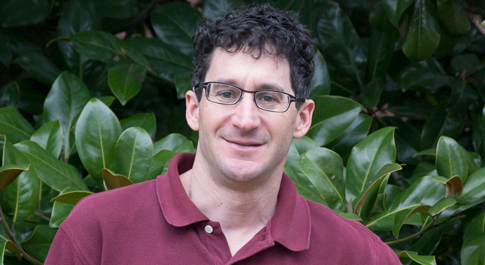Dan Cristol has an audacious goal for undergraduate research at W&M
Dan Cristol is beginning the 2018-19 academic year in a newly created position at William & Mary’s Roy R. Charles Center for Academic Excellence: faculty director of undergraduate research.
“My overarching goal is to make William & Mary synonymous with undergraduate research in everyone’s mind,” he said. “Is that ambitious enough for you?”
It’s another hat on Cristol’s already-crowded rack. He is an active researcher, Chancellor Professor of Biology, ornithologist, birding columnist in the Virginia Gazette and also serves as Gandalf to the university’s elite fellowship of 1693 Scholars. He acknowledges that he is taking up his ambitious goal from a position that’s already pretty strong.
“It’s impossible to verify this, but I think William & Mary is doing better undergraduate research — and more of it per capita — than any other school,” he noted. “I think that information should be better known, better documented and we should make undergraduate research a selling point to prospective students.”
Cristol has some impressive challenges on his way to meeting his overarching goal. He wants to quantify the level of undergraduate involvement in research as well as to launch an initiative to streamline, simplify and standardize the path to research for undergraduate students, particularly those students who don’t have a college-savvy background.
Cristol explained that he will work with William & Mary’s scholarship programs such as the Monroe Scholars, 1693 Scholars, Sharpe Scholars, WMSURE, most of which have a strong research focus. There is also a more “amorphous” component to the position, to serve as the contact for any other office or individual that has to do with research.
“For instance, if we see we want more undergraduates to get involved with research earlier, then academic advising might be the best way to reach them,” he said.
An important aspect of Cristol’s new position will be working with William & Mary’s Center for the Liberal Arts to develop opportunities for the seniors taking the COLL 400 capstone course, a research-based element of the undergraduate COLL Curriculum that is being implemented for the first time this year.
The Charles Center allocates funding for individual student undergraduate experiences and also coordinates all the presentations that showcase research on campus throughout the year. Cristol said one of his longer-term goals is to increase attendance at the symposia, possibly by consolidating events.
Another Cristol goal is to increase the number of undergraduate researchers at a William & Mary. He led a year-long working group that surveyed the scale and scope of undergraduate research and also examined attitudes of the university community towards research. Undergrad research is a strong William & Mary tradition, but not all undergrads were taking part. Cristol’s group wanted to find out why.
“What we found was that students who weren’t doing research said they didn’t know how to get started,” he said. To follow up, he went undercover.
“I went to every department or program’s web site and pretended I was a student,” Cristol said. “I wanted to find out how many clicks I had to make to get to instructions on how to do research in the department.”
He found that information on how to get started in research varied among the departmental web pages. “Often, it was like four clicks,” he said. “Or you just couldn’t find it at all.”
Cristol notes that the paths to undergraduate research have become clearer in recent years, but he said his survey has revealed that one group of students lags others in becoming involved in research at William & Mary.
“The group that’s under-participating is first–generation college students, ” he said, adding that students in this group are less likely to have been encouraged to “just go talk to the professor” — the most informal, but generally most reliable, path to research involvement.
Cristol said that 85 percent of graduating students surveyed reported having been involved in research. Sixty percent say they’ve done research out of class.
“It’s a pretty high percentage as far as the students are concerned,” he said. “But I want to know what the faculty think. And I want to know if the faculty want to do more research with undergraduates.”
Cristol brings to the position a long history of involving William & Mary undergraduates in his own research, notably a continuing series of studies involving the effects of mercury on birds.
 Skip to main content
Skip to main content

